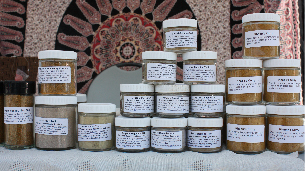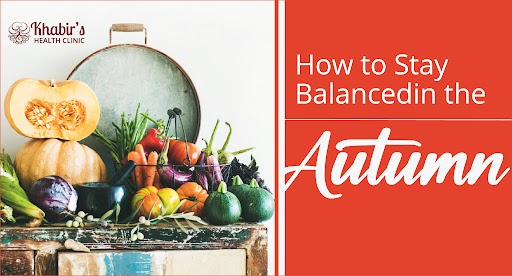🍂 Ayurveda in Autumn 🍁
Autumn is a time of transition. After the heat of summer, we begin to feel the crisp air, the strength of the wind, and the first signs of winter. According to Ayurveda, autumn carries the qualities of dryness, roughness, windiness, coolness, and clarity. For the body, this is the time to prepare for the cold and dry months ahead.
Ayurveda emphasizes seasonal routines (Ritucharya) as an important part of staying healthy. Adjusting diet and lifestyle in autumn helps prepare the body for winter.
🍲 General Autumn Guidelines
Best foods: Fall harvest vegetables—sweet potatoes, squashes, beets, carrots, radishes, turnips, arugula, kale, cabbage, cauliflower, collard greens.
Eat warm & nourishing meals: Basmati rice, sprouted wheat, mung dal, soups, steamed vegetables, and warming spices like cumin, coriander, mustard seeds, and cinnamon.
Avoid: Cold drinks, ice cream, excess beans, and fermented foods.
Recommended: Soups, casseroles, and freshly prepared warm dishes.
Note: Fasting is not generally suitable in autumn.
🌬️ Vata in Autumn
Vata types (thin build, dry skin, sensitive digestion, often feel cold) need extra care in this season.
Eat warm, moist, and heavy foods: cooked grains, spiced vegetables, ripe fruits (bananas, mangos, oranges, plums), nuts, nut butters, ghee, eggs, cheese, and fish.
Best proteins: Deep-sea fish like halibut and salmon.
Treats: Moist desserts like zucchini bread, pumpkin bread, or carrot cake. Try a date–almond–yogurt shake for energy.
Bedtime tip: A cup of warm spiced milk with ghee can promote deep sleep.
Avoid: Excess raw foods and salads (unless at lunch, with plenty of oily dressing).
✨ In autumn, Vata types should eat heavier, oilier, and warming foods to protect tissues and skin, making the transition into winter smoother.
🔥 Pitta in Autumn
Pitta types (warm body, strong appetite, athletic build) get natural relief as summer heat fades.
Best fruits: Apples, pears, berries, dates, figs, soaked raisins.
Supportive foods: Avocado, asparagus, cucumber, green beans, okra, sweet potatoes, quinoa, oatmeal, basmati rice, tofu, fresh yogurt, ghee, soaked almonds, sunflower seeds.
Cooling spices: Coriander, fennel, cilantro, coconut, fresh lime juice.
Sweet treats: Rice pudding or spiced warm milk with cinnamon and nutmeg.
Avoid: Overly heating spices (cayenne, dried ginger), cranberries, corn, eggplant, raw onions, radishes, millet, rye.
✨ In autumn, Pitta types don’t need strict restrictions—this is a good time for gentle cleansing and detoxification.
🌱 Kapha in Autumn
Kapha types (heavier build, slow digestion, nurturing by nature) find balance in the dry, light, and mobile qualities of autumn.
Supportive foods: Apricots, berries, cherries, soaked prunes/raisins, beets, carrots, mustard greens, okra, onions, honey, amaranth, miso, cottage cheese, goat’s milk, sunflower seeds.
Spice it up: Well-spiced meals keep digestion strong.
Lifestyle tips:
Wake up before 7 a.m.
Boost metabolism with a little honey and cayenne in the morning.
Exercise vigorously—jog, cycle, or practice dynamic yoga.
Caution: Autumn brings holiday feasting—eat well but balance it with consistent, vigorous activity.
✨ For Kapha types, autumn is ideal for building strength and maintaining weight, but only with regular movement.
🍁 Seasonal Reminder
Always eat in season! Autumn is a time of change, and Ayurveda teaches us to adapt our diet and lifestyle to the harvest and to our unique body type (Vata, Pitta, or Kapha).
How to treat the common cold and flu
Ayurvedic Perspective on Fall - Sharad Ritucharya (Fall Routine)


















